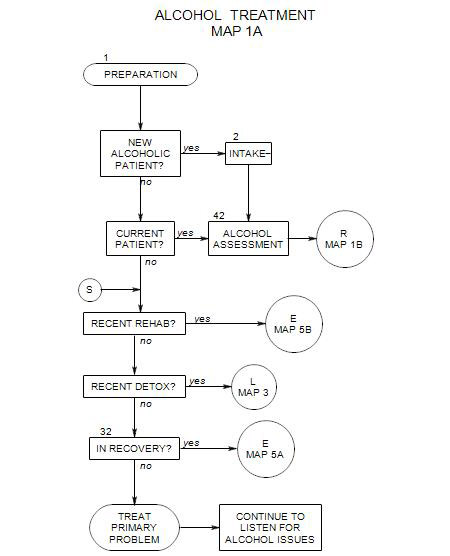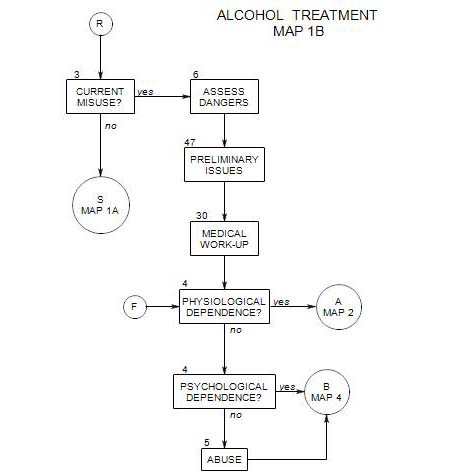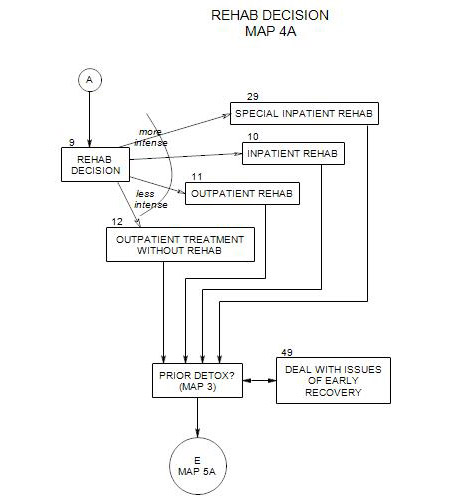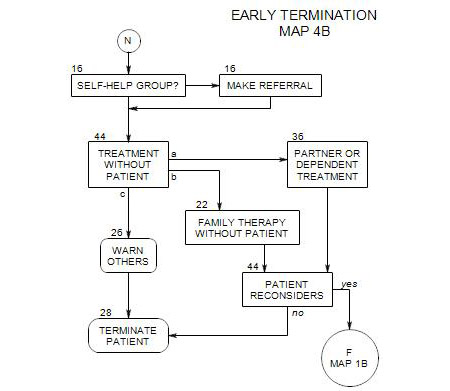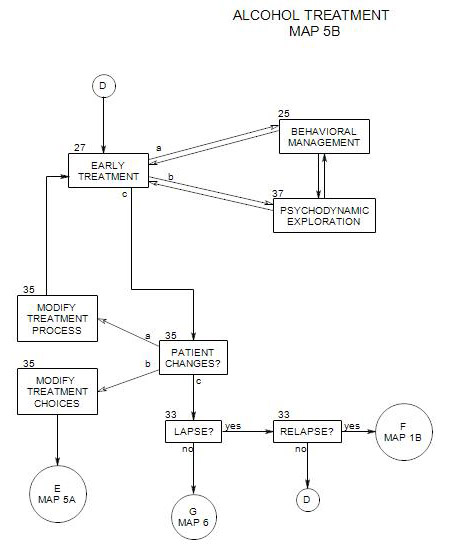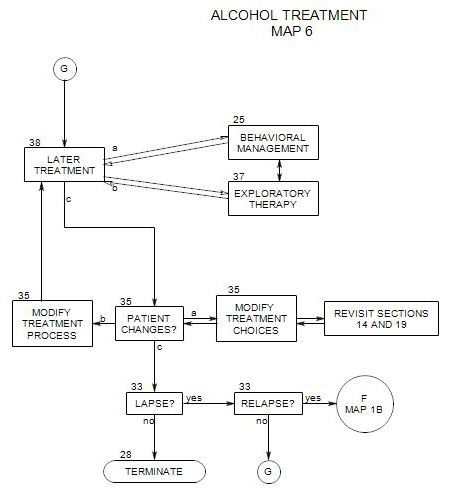1. PREPARATION AND BACKGROUND
As with any psychotherapy treatment, preparation occurs at many levels, including long-term professional training in psychotherapy and in alcohol treatment.
It is helpful for a therapist who sees alcoholic patients to attend a few AA meetings, in order to have a clear understanding of the format of AA groups, the content discussed, and the program philosophy. Contact the local AA Intergroup for times and days of open meetings (open to the public),.
You should be ready for any new patient, with appropriate forms and other data gathering aids. A listing of contact telephone numbers for self-help groups is also useful to have on hand.
It is not uncommon for patients to be dually addicted: to other drugs in addition to alcohol. Familiarity with Narcotics Anonymous can also be valuable.
It is good to have a ready file of treatment facilities that you can send patients to if you need to. You should also have some familiarity with the programs at each of the facilities, the staff, and their policies. It is important to know in advance of seeing any patient the referral process for sending a physiologically dependent patient to a detoxification facility [See Section 7], so the process can be handled efficiently and smoothly when it is needed.
Enough data should be gathered in the first session to work out a preliminary direction by the second session. This of course can be as simple as “continue gathering information for a few more sessions”, or “see whether we can work together”.
There are many good resources for information about alcohol misuse and treatment, including the ones listed in the References section. These will be cited specifically in the sections where they are most relevant.
1a. Theoretical perspectives on treatment
The perspective you take in working with a patient can influence the things you look for, the kind of reactions you have to patient reports, and all other aspects of ongoing treatment. A variety of theoretical perspectives can be used to understand and treat a particular patient. The choice of perspective depends on [1] therapist preference, [2] patient history, and [3] patient symptoms and style.
Some of the possible perspectives include thinking of –
- abstinence as a matter of motivation, which needs to be explored and altered.
- drinking as a disease, and an alcoholic patient as out of control and in need of external behavioral help.
- drinking as a defense, and treatment as the exploration and manipulation of defenses to allow the person to operate effectively without using alcohol.
- working with a patient’s overly harsh and punitive superego, in order to reduce the patient’s need to escape into drink.
- increasing the persons general ego functioning, to manage life more effectively
- working on the person’s relationships with others.
These and other theoretical perspectives on alcohol treatment have been expressed effectively by a number of authors, including reviews by Miller and Hester [2003], Morgenstern and Leeds [1993] and Leeds and Morgenstern [1996].
The approach followed here is integrative and eclectic, drawing on different perspectives at different times as they seem relevant. To do so leaves open many empirical questions that will need to be addressed as the approach develops.
